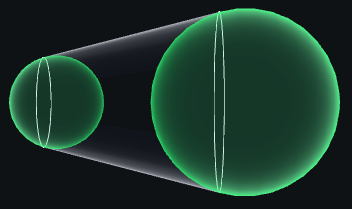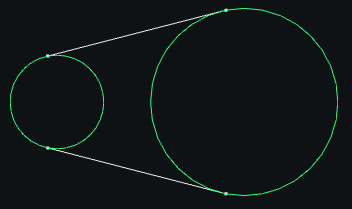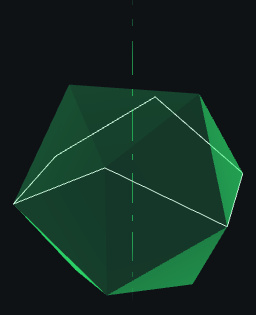hull - build convex hulls from lines or surfaces
This module provides functions to compute convex hulls
(See https://en.wikipedia.org/wiki/Convex_hull)
and other hull-related operations for Mesh and Web
Those can be very helpful to complete sketches or parts by adding the missing surface portions. Also very helpful to sort a set of directions.
-
convexhull(source: [vec3]) Mesh[source] compute the convex hull of the input container
Parameters: source (typedlist/Web/Mesh) – the input container, if it is a Web or Mesh, their groups are kept in the output data Example
>>> m = convexhull(mesh([ ... uvsphere(O, 1, alignment=X), ... uvsphere(4*X, 2, alignment=X), ... ]))

-
convexoutline(source: [vec3], normal: dvec3 = None, flatten: bool = False) Web[source] based on
convexhull()but will extract the loop formed by the edges in the biggest planar projection of the convex hullParameters: - source (typedlist/Web/Mesh) – the input container, if it is a Web or Mesh, their groups are kept in the output data
- normal – the projection normal to retreive the outline using
horizon(), if None is given it will default to the direction in which the outlien surface is the biggest - flatten – whether to project the outline points in its mean plane
Example
>>> convexoutline(web([ ... Circle(Axis(O,Z), 1), ... Circle(Axis(4*X,Z), 2), ... ]))

-
simple_convexhull(points: [vec3]) [uvec3][source] Just like
convexhull()but minimalist. It does not take care of groups crossing. It doesn’t return a new Mesh but a buffer of triangles indices
-
horizon(mesh, direction: dvec3) Web[source] Return a Web of the ORIENTED edges of the given mesh that lay between triangles that are oriented either sides of
direction
-
restore_groups(source, indices) Mesh[source] Create a mesh contaning the given simplices, associated with groups created from group crossing from the source mesh. The simplices must refer to points in
source. The created groups are tuples of indices of the groups touched by each simplex.Parameters: - source (Mesh/Web) – the mesh containing reference triangles and groups
- indices – a buffer of simplices indices (depending on the dimensionnality of
source) we want to find groups for